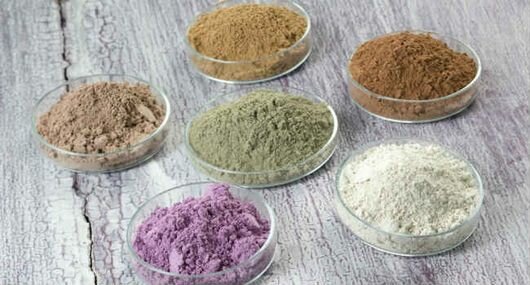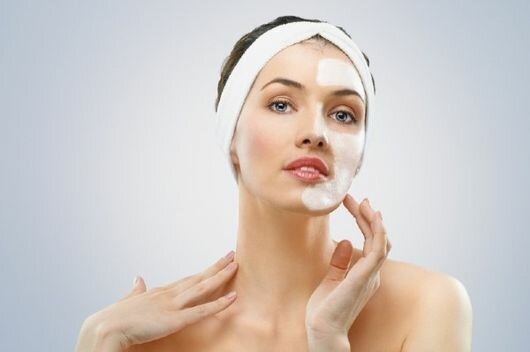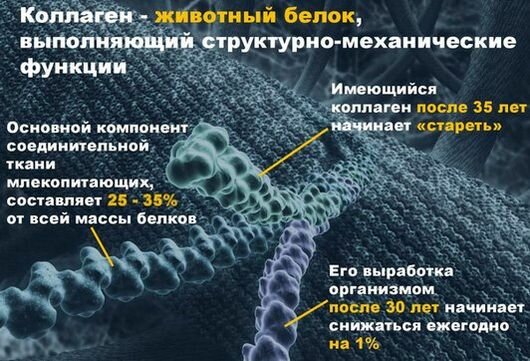Chemical peeling is a popular cosmetic facial procedure that promotes skin renewal, rejuvenation, and regeneration. It does not have age restrictions, but before deciding whether to conduct it in a salon or at home, it is important to consider the pros and cons, as well as the features of the procedure.
- What is chemical peeling
- Types of chemical peeling
- Age dependence
- Pros and cons of using chemical peeling
- Indications for peeling
- Contraindications
- Stages of the procedure
- Proper preparation for a session in the salon
- Chemical peeling products at home
- Fruit peeling
- Almond peeling
- Milk peeling
- How to perform chemical peeling with lactic acid
- Using pharmacy products
- Homemade chemical peeling with salon preparations
- Skin Care After Chemical Peeling
- How often can face peeling be done
- Facial Peeling Video
What is chemical peeling
The name comes from the English “peel” – scrape, sand. The bottom line is the exfoliation of the upper layer of the epidermis, consisting of their dead cells, using special chemical compositions. Thanks to exfoliation, the processes of natural renewal, regeneration of tissues and cells, the synthesis of natural elastin, collagen, hyaluronic acid are activated. 

Peeling has the property of deep exposure, which helps to improve the aesthetic state of the epidermis, providing rejuvenation without surgical intervention. The course can be conducted to restore tone, elasticity of the facial areas, neck, decollete, hands, as these areas are most susceptible to aging.
The rejuvenation program, including peeling, has no age restrictions. Depending on the degree of cosmetic problem, the number and frequency of sessions, the choice of the active components of the chemical composition and its concentration are individually calculated.



 Do not miss the most popular article in the rubric:
Do not miss the most popular article in the rubric: Facial massage according to the Japanese doctor Asahi Zogan.
Types of chemical peeling
When deciding to carry out chemical face peeling, the pros and cons must be taken into account, as well as familiarize yourself with existing types of exfoliation.
According to the degree of impact, they distinguish:
-
Surface. The most painless, easily tolerated by patients, characterized by a minimal risk of side effects. Exfoliation is carried out in the upper stratum corneum, it is indicated for prophylaxis, correction of the first age-related changes. The active substances of the composition is a concentrate of alpha hydro acids. Acids (malic, citric, glycolic, lactic) in a minimal molecular compound help eliminate hyperpigmentation, fine facial wrinkles, contribute to narrowing of pores.


- Median. Active substances act within the living layers of the dermis, to the basement membrane. The composition includes retinoids, 20% acetic acid, 30% trichloroacetic acid solution, phenol or azelaic acid. The procedure is characterized by a deeper effect, allows you to even out turgor, eliminate scars, scars, striae, hyperpigmentation, signs of photoaging.
- Deep. It belongs to the category of dermatosurgical procedures. The penetration depth is from the papillary layer to the reticular dermis. As the active substance, phenol is used, a solution of 35-50% TCA. The course allows for deep correction, providing a lifting effect. Thanks to the effects of acids, deep wrinkles and visible age-related changes can be eliminated. However, deciding on such a procedure, it is worth considering the toxicity and possible complications.
Age dependence
Chemical peeling of the face after evaluating the minuses and advantages of the procedure can be carried out at any age, but not earlier than 14 years. At a young age, surface polishing is carried out with fruit acids of low concentration. General recommendations for surface and middle peeling – after 30 years, for the prevention and correction of age-related changes.
After 40 years, physiological processes are not so active, the skin undergoes the first visible changes, so a course of several procedures can significantly change the state of the epidermis from the inside. From this age, deep phenol peels are recommended.
Since the procedure may have contraindications and serious side effects, such sessions should be performed under the supervision of a professional cosmetologist.
Pros and cons of using chemical peeling
The procedure has many advantages:
- improving the structure, complexion;
- treatment of rosacea, rosacea in the initial stage;
- treatment of acne and traces of post-acne;
- smoothing scars, scars;


- cell and tissue renewal;
- narrowing and cleansing of pores;
- elimination of hyperpigmentation;
- clarification of the stratum corneum;
- activation of natural rejuvenation processes;
- optimization of the production of sebum;
- lifting, strengthening, visual rejuvenation.
Chemical peeling has several disadvantages:
- Long healing period. The effect is observed after a median and deep exfoliation.
- Possible complications. May occur with improper selection of the composition, acid concentration, violation of the procedure technology.
- Toxicity and soreness. Compounds with phenol are toxic, can cause pain. It is recommended to add gelling agents to the composition or replace it with trichloroacetic acid.
- Hyperpigmentation. Darkening of the area can be observed after peeling on fair skin.
- Hypopigmentation. Strong lightening can be observed after peeling on dark skin.
- Eritherma. After the procedures, prolonged redness of the entire skin or in some areas may be observed.
Indications for peeling
Indications for acid exfoliation are:
- The need for the prevention and correction of age-related changes. Hyperpigmentation of various etiologies.
- Thickening of the skin caused by demodicosis, psoriasis, ichthyosis or versicolor.


- Scars, scars, striae.
- Ingrown hair.
- Acne, increased greasy, acne, enlarged pores.
Contraindications
Salon chemical face peeling – there are pros and cons, as well as sessions conducted at home.
A number of absolute contraindications:
- Severe pathology of internal organs.
- Infectious diseases, herpetic virus in the active stage.
- Skin pathologies in the acute stage.
- Violation of the integrity of the epidermis (open wounds, cuts, deep scratches).
- Pregnancy, lactation period.
- Taking medications (Roaccutane, salicylic and azelaic acid, benzoyl peroxide, hydroquinone).
- Intolerance to the ingredients of exfoliative composition.
Relative contraindications include the hot season, fresh tanning, taking tetracycline antibiotics, retinoids, antipsychotics, a tendency to form scars.
Stages of the procedure
After evaluating the pros and cons of chemical peeling for the face, you can proceed to the procedure. If surface peeling is performed with a weak concentrate of fruit acids, additional preparation is n
ot required.
For effective median and deep exfoliation, it is necessary to apply a cream with a low acid content 7–10 days before the session.
A session consists of several main stages:
- The skin is cleaned with milk, wiped with a tonic with hyaluronic acid, a gel with 5% glycolic acid is applied.
- With a fan brush, the composition is applied to the frontal zone, nasal, side sections of the cheeks, chin and central part of the face. From the upper and lower eyelids, you need to step back 0’4 inch, avoiding contact with the mucosa. The composition is applied in 3 stages, the interval by application is 5 minutes.


- Neutralization. For each composition individually, the onset of exfoliation. It depends on the% content and Ph, but not more than 15 minutes for the face and 20-40 seconds for the eyelids. Flushing away acids without neutralization can cause burns.
- At the final stage, the residual neutralizer and acid are washed off with water.
Proper preparation for a session in the salon
Before a session in the salon, a cosmetologist consults to collect an anamnesis. The specialist evaluates the condition, skin type, degree of cosmetic problems, the presence of allergies to components and contraindications.
For a more effective result, they can offer preliminary:
- Take 1-2 sessions of mesotherapy or biorevitalization 2-3 weeks before the session.
- Perform ultrasonic facial cleansing to improve the after-peeling period.
- Prescribe preparatory therapy with the application of lotions, creams, gels or emulsions with a low acid content.
- Prescribe multivitamins, preparations with a high content of Omega-3.
Chemical peeling products at home
Chemical peeling can be done at home. The main active ingredients are enzymes, or enzymes, as well as acids.
You can carry out the procedure using simple tools and pharmacy drugs:
- salicylic acid tablets;
- 3% hydrogen peroxide;
- ammonia, boric or camphor alcohol;
- sea salt, baking soda;
- tramp;


After the procedure of chemical peeling for the face, the pros and cons are visible in the photo - fruit acid concentrate;
- a solution of calcium chloride with a concentration of not more than 5-10%;
- high acid fruits (apple, papaya, citrus fruits, kiwi, pineapple).
From pharmacy preparations individually or in various combinations, you can prepare a peeling composition.
Fruit peeling
Despite the fact that it has chemical face peeling pros and cons, the composition with fruit acids in cosmetology is considered the least aggressive. It helps to effectively exfoliate the stratum corneum, restoring the skin to a healthy and toned look.
Fruit Peeling Recipes:
- With honey and pineapple. 200 g of peeled and finely chopped pineapple mixed with 2 large tablespoons of honey. For viscosity add 1 tablespoon. oat flour. Apply for 10 minutes, rinse with running water.
-
With oils and lemon. Mix 2 tablespoon. olive oil, 2 tablespoon. rosehip oil, add 10 drops of lemon juice. Warm the mixture a little in a water bath, apply for 5-7 minutes.


- With orange and coffee. Grind the peeled pulp of 1 small orange into gruel, add 1 tablespoon. ground coffee and 1 tablespoon. honey. Apply the mixture on the face for 5-7 minutes. In the summer, you can add 5-6 ripe apricots instead of citrus.
- Grind 200 g of banana, kiwi and pineapple pulp in a blender. Apply mass on face for 15 minutes. Wash off with cool water.
- Grind 5-7 grapes, add a couple of drops of olive oil. Apply the mixture to a moist, thoroughly cleansed face for 10 minutes. Tartaric acid promotes skin rejuvenation and whitening.



 Do not miss the most popular article in the rubric:
Do not miss the most popular article in the rubric: Face fitness for lifting the face contour, rejuvenation, muscle tone. Master class from Elena Karkukli
Almond peeling
Mandelic acid is characterized by a renewing effect, eliminating the stratum corneum and activating regeneration.
Almond peeling recipes:
- Connect in a container 1 tablespoon. almond oil, 2 tablespoon. almond flour, 2 tablespoon. water. Add 2-4 drops of aloe juice and lavender oil. Apply to skin and leave for 10 minutes.
- Grind 7-8 berries of ripe raspberries, add 0,68 fluid ounce of mandelic acid 30%. Grind the composition through a sieve, add 0,68 fluid ounce of water. Gruel is applied to the face for 5-10 minutes. For the first session, just hold the mask for 3 minutes.
- Grate oatmeal and almonds to flour, the proportion is 1: 1. Pour 1 teaspoons. milk powder, dilute with water to a thick consistency. Brush the mixture on the face, neck and decollete for a quarter of an hour, then remove the remaining mixture by rinsing with warm water.
Milk peeling
The acid found in dairy products is an effective active ingredient for peeling. It is hypoallergenic and natural for the skin, so after the procedure there is minimal risk of side effects.
Easy milk peeling recipes without concentrate:
- 2 tablespoon of homemade cottage cheese, 3 tablespoon. mix low-fat kefir, whey or yogurt to a homogeneous state, apply the mass on cleansed skin. Hold for 10-15 minutes, then rinse off the residue with warm water.


- 1 tablespoon homemade sour cream, 2 tablespoon. high fat cream, 1 teaspoons sea or Extra salt. Mix until smooth, apply the mass on the steamed face with massaging movements. After 5-10 minutes, remove the mixture, moisturize the skin with cream.
- Mix 1 tablespoon. chopped oatmeal, yolk 1 egg, 1 teaspoons. lemon juice. Apply a homogeneous mass to the skin, massage for 3-5 minutes, remove the residues with running water.
How to perform chemical peeling with lactic acid
To carry out median peeling at home, it is recommended to purchase a lactic acid concentrate in a pharmacy.
For the procedure you will need:
- lactic acid from 30-80% 0.5 g;
- 0,34 fluid ounce of distilled water.


For the first sessions, it is better to take a less concentrated composition in order to avoid side effects.
To prepare the converter, you need:
- 1 teaspoons food soda;
- 8,45 fluid ounce of distilled water.
Stages of carrying out:
- Make an acid solution. Acid is added to water, and not vice versa.
- Cleanse the skin with foam or gel, degrease with alcohol-containing lotion or calendula tincture.
- Using a brush or cotton pad, apply the solution in one coat. It is necessary to apply the solution in a clear sequence, avoiding contact with eyes and lips for 3 minutes.
- Perform neutralization with soda solution in the application sequence.
- After the procedure, apply a soothing cream or alginate mask.
Using pharmacy products
Despite the fact that it has chemical face peeling pros and cons, the procedure is actively carried out in the salon and at home. A budget alternative to professional formulations is pharmacy products.
Home Peel Recipes:
- Combine in equal proportions ( 0,51 fluid ounce each) ammonia and camphor alcohol, boric acid. Stir 1 tablet of hydroperite in the same composition, add glycerin or grated soap to a creamy consistency. Apply to face for 5-7 minutes, remove with a cloth moistened with 10% calcium chloride, and then rinse with water.
- Dilute the gum powder with a weak solution of hydrogen peroxide. Apply the composition for 3-5 minutes. If burning sensation is felt, the solution must be washed off. After the procedure, the skin may turn red, but after some time the redness will go away, the skin will noticeably clear.


- A solution of calcium chloride is applied to cleansed skin, remains to dry, rinsed off and applied again. To wash off the composition, lather hands with baby fumes until foaming and massage your face for 2-3 minutes. When massaging, the composition rolls off, cleansing the skin and rejuvenating the skin.
- Crush salicylic acid tablet in 0,51 fluid ounce of water, add teaspoons food soda, 0,17 fluid ounce of honey. Exposure time no more than 5 minutes. Peeling is indicated for oily skin.
Homemade chemical peeling with salon preparations
Many salon preparations are adapted for holding sessions at home. These are GiGi, Christina, Mediderm, Arcadia and many others.
Recipes:
-
Multilingual GiGi. Contains lactic and salicylic acid, biosulfur, plankton extract, urea. The mixture is ready to use, applied to skin cleansed with micellar water for 10 minutes. Remove the composition with cool water, apply a calming serum.


- Antistress peeling with probiotic action Christina (Israel) . It is applied to the front, neck and decollete, avoiding the areas around the eyes. Exposure is no more than 10 minutes. Washed off with a solution of plumeria.
- The program “Skin youth” from TM Arcadia. To The line contains all the necessary tools for conducting a full course at home. The finished composition with fruit acids is applied to the skin cleansed and prepared with tonic, the exposure time is not more than 10 minutes. It is washed off with a neutralizer, the effect is fixed with a cream with coenzyme.
Skin Care After Chemical Peeling
Rules for leaving after chemical peeling sessions:
- Regularly moisturize the epidermis to restore moisture balance.
- Provide protection from external influences, avoid open sun, do not sunbathe.
- Provide comprehensive care, delicate hygiene, do not touch thinned skin with your hands.
- Do not apply decorative cosmetics, exclude scrubbing for 5-7 days.
- Do not break off peeling.
How often can face peeling be done
The procedure has pros and cons, as it affects the deeper layers and internal tissues. Therefore, the course of chemical peeling for the face is calculated taking into account all the features.
Exfoliation with acids can be carried out in a course of 5-10 sessions, the interval between sessions – 10-14 days. For prevention, sessions are carried out 1-2 times in 3 months. Cleansing with enzymes has a milder effect on the dermal layer, so the frequency of sessions 1-2 times a week is allowed.
Facial Peeling Video
Peeling, what is it and why is it needed:
Peeling: pros and cons:







